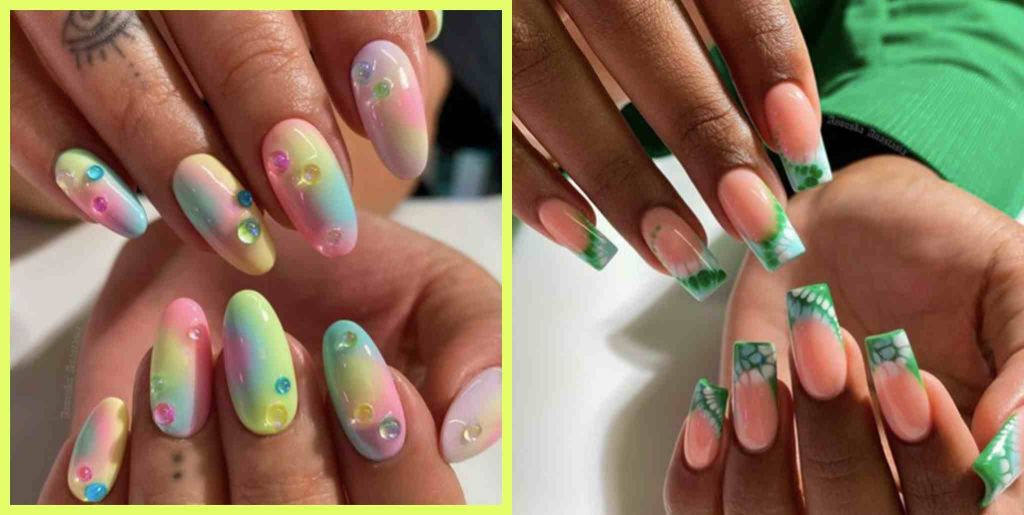Ah, the world of nails! Just like at Diva Salon, where each nail type serves a unique purpose, nails for DIY projects also vary. For outdoor projects, go galvanized—rust-resistant and perfect for enduring elements. Stainless steel nails are your wet area champs, unfazed by moisture. And for delicate finish work, opt for finish nails—subtle and ideal for trim. So, just as Diva Salon tailors styles to fit, choose your nails wisely to nail your next project!
Common Types of Nails

Common types of nails, such as galvanized and stainless steel, are ideal for Qatar’s harsh weather conditions due to their resistance to rust and corrosion. Similarly, nail care tips in Qatar’s climate involve using moisturizing products to combat dryness and brittleness caused by the arid environment. Regular trimming and application of protective coatings can help maintain healthy nails despite the challenges posed by the weather.
Common types of nails encompass a variety of options tailored to different construction needs. Among them are common nails, characterized by a sturdy shank and flat head, suitable for heavy-duty framing. Finish nails, with their smaller heads and tapered shanks, excel in trim work and delicate applications. For finer detail, brad nails offer a nearly invisible finish. Roofing nails are distinctively long and robust, ideal for securing roofing materials. Galvanized nails, coated for rust resistance, are favored for outdoor projects exposed to the elements.
1. Common Nails
Let’s start with the basics. Common nails are your everyday nails, typically made of steel and used for general construction purposes. They have a thick shank and a flat head, making them suitable for framing, rough carpentry, and other heavy-duty applications where strength is key.
2. Finish Nails
On the opposite end of the spectrum are finish nails. These are designed for more delicate work, such as installing trim, molding, or other decorative elements. Finish nails have a smaller head and a slender, tapered shank that minimizes splitting of wood.
3. Brad Nails
Brad nails are similar to finish nails but even finer. They have a very small head, almost invisible when driven into wood, making them ideal for attaching delicate trim pieces without leaving noticeable marks.
4. Roofing Nails
As the name suggests, roofing nails are used for roofing projects. They are typically longer and have a larger head to provide a secure grip on shingles or roofing materials.
5. Casing Nails
Casing nails are designed specifically for attaching window and door casings. They have a medium-sized head and a strong grip, ensuring that casings stay firmly in place.
6. Masonry Nails
When working with concrete or brick, masonry nails are your go-to choice. These nails have a hardened steel construction and often feature ribbed or fluted shafts for better grip in masonry materials.
7. Galvanized Nails
Galvanized nails are coated with a layer of zinc to protect against rust and corrosion. They are commonly used for outdoor projects or in areas where moisture is a concern.
8. Stainless Steel Nails
Similar to galvanized nails, stainless steel nails are highly resistant to rust and corrosion. They are excellent for use in wet environments, such as bathrooms or outdoor structures exposed to the elements.
Choosing the Right Nails for Your Project

Choosing the right nails for your project is crucial for a successful outcome, just like selecting the right cosmetology services for your desired look. For woodworking or construction, consider the material, application, and environmental factors when choosing nails. Similarly, when deciding on cosmetology services, factors such as hair type, desired style, and maintenance requirements play a role in achieving the perfect look. Both nails and hairstyles should complement your overall project or appearance seamlessly.
Choosing the right nails for your project involves considering factors such as the type of material, application, and environmental conditions. For example, galvanized nails are suitable for outdoor projects due to their rust-resistant properties. Stainless steel nails are ideal for wet areas like bathrooms. Additionally, consider the strength requirements and aesthetic preferences when selecting nails to ensure a successful and durable outcome for your project.
Now that we’ve covered the main types of nails, let’s discuss how to choose the right ones for your specific project.
Consider the Material:
Different materials require different types of nails. For example, wood projects often call for common nails, finish nails, or brad nails, while masonry projects require masonry nails.
Think About the Application:
Are you framing a house, installing trim, or working on a roofing project? The type of nail you need will depend on the application. For instance, roofing nails have specific features that make them suitable for securing roofing materials.
Environmental Factors:
If your project is outdoors or in a damp environment like a bathroom, using galvanized or stainless steel nails can help prevent rust and corrosion, ensuring the longevity of your work.
Strength Requirements:
Consider the load-bearing capacity required for your project. For heavy-duty applications, such as framing or structural work, opt for nails with thicker shanks and larger heads that provide enhanced strength and holding power.
Appearance:
If aesthetics are important, such as when working on visible trim or molding, choose nails that can be easily concealed or have a finish that matches the surrounding material.
Compatibility with Tools:
Ensure that the nails you choose are compatible with your nail gun, hammer, or other fastening tools. Different types of nails may require specific tools for installation.
Practical Tips for Using Nails
When using nails, practical tips like pre-drilling for hardwoods and spacing nails evenly ensure a professional finish, much like how skilled nail services enhance your nail appearance. Utilize the right tools and techniques for driving nails to prevent damage or splitting, similar to how professional nail technicians use proper equipment and expertise for precise nail care. These tips for both nails and nail services contribute to a polished and long-lasting result.
When using nails, practical tips can make a significant difference in the quality of your work. Pre-drilling pilot holes in hardwoods can prevent splitting, while ensuring proper sizing and spacing of nails enhances structural integrity. Angle your nails slightly for improved holding strength, especially in softer materials. Utilize the right tools, such as nail guns or hammers, adjusted for accuracy and efficiency. Lastly, finish with finesse by countersinking nails and filling holes for a polished final appearance.
Once you’ve selected the right nails for your project, here are some practical tips for using them effectively:
Pre-Drilling:
For hardwoods or dense materials, pre-drilling pilot holes can prevent the wood from splitting when driving nails.
Proper Sizing:
Proper sizing of nails ensures optimal holding power and prevents damage during installation. Similarly, choosing the best nail treatments for damaged nails is essential for maintaining nail health. Look for treatments containing ingredients like biotin, vitamin E, and keratin to strengthen and repair damaged nails. Regular application of these treatments, coupled with proper nail care practices, can improve the overall condition of your nails and prevent further damage. Use nails of the appropriate length and gauge for the material and application. Using nails that are too short or too thin may not provide sufficient holding power.
Angle of Insertion:
When driving nails, aim for a slight angle rather than going straight in. This helps improve holding strength, especially in softer woods.
Spacing:
Space nails evenly and according to the project’s requirements. Overcrowding nails can weaken the wood and compromise the integrity of the structure.
Use the Right Tools:
Whether you’re using a hammer, nail gun, or pneumatic tool, ensure that it is properly adjusted and maintained for smooth and accurate nail placement.
Finish Carefully:
When working with finish nails or brad nails in visible areas, use a nail set to countersink the nails slightly below the surface. Fill the resulting holes with wood putty for a seamless finish.
FAQs
What nail type is best for your nails?
For your own nails, the best nail type depends on your preferences and needs. If you’re looking for durability and longevity, stainless steel nails may be the way to go due to their rust-resistant properties. However, if you prefer a more decorative or delicate approach, brad nails or finish nails can offer a finer, less noticeable appearance.
What is the healthiest style for nails?
The healthiest style for nails prioritizes natural care and maintenance. This includes regular trimming and shaping to prevent breakage and promote nail strength. Using nourishing oils and avoiding harsh chemicals can also contribute to healthier, stronger nails.
What type of nails stay on the best?
Nails that stay on the best typically have a combination of factors. For wood projects, spiral or ring-shank nails provide excellent holding power due to their threading. In concrete or masonry, hardened steel nails like masonry nails are designed to grip tightly and remain secure.
Which nail method is best?
The best nail method depends on the specific project and materials involved. For woodworking, using a combination of glue and nails can provide strong and durable joints. In construction, pneumatic nail guns are often preferred for their speed and efficiency, especially when working with large quantities of nails.
Which nails are more attractive?
Finished nails and brad nails are generally more attractive due to their smaller heads and minimal visibility when driven into wood. They are commonly used for trim work, molding, and other decorative applications where a seamless finish is desired. Additionally, finishing techniques like countersinking and wood putty can further enhance the aesthetic appeal of these nails.
Conclusion
In conclusion, choosing the best nails for your project involves considering factors such as the type of material, application, environmental conditions, strength requirements, and desired appearance. By understanding the differences between common nails, finish nails, specialty nails like roofing or masonry nails, and materials like galvanized or stainless steel, you can make informed decisions that contribute to the success and longevity of your construction or woodworking endeavors. Happy nailing!




